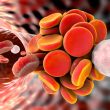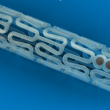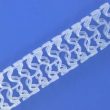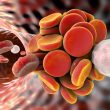1) Balloon Angioplasty: A Reasonable Plan B for Chronic Thromboembolic Hypertension Thromboembolic pulmonary hypertension is caused by pulmonary artery stenosis caused by organized thrombi. The only treatment potentially healing for this disease is surgical thrombectomy. However, patients with lesions in very peripheral branches or high surgical risk patients with comorbidities might benefit from a plan B,...
DKCRUSH-V: Left Main, Not Just Another Bifurcation
Cardiac Artery Bypass Graft Surgery has been shown more effective than percutaneous coronary intervention (basically because it renders lower revascularization rate) in patients with severe left main bifurcation lesions receiving 1st generation drug eluting stents. This is why the 2014 American guidelines recommend CABG for most patients. But the EXCEL and the NOBLE trials brought back hope to...
Ischemic and Bleeding Risk After Primary Angioplasty
Patients with ST-segment elevation myocardial infarction who undergo primary angioplasty are at high risk for both ischemic and bleeding events, which affect significantly both morbidity and mortality. An optimal selection of antithrombotic therapies in terms of strength and duration must take into account the timing for the procedure, since the risk for these complications may...
DACAB: Ticagrelor and Aspirin Improve Vein Graft Patency
According to this Chinese study, dual antiplatelet therapy with ticagrelor and aspirin improves vein graft patency a year after surgery without increasing the risk for major bleeding. Treatment with the P2Y12 inhibitor ticagrelor in combination with aspirin has been widely accepted for patients with acute coronary syndrome undergoing angioplasty. However, there were no related data regarding surgical revascularization. Read also: “Ticagrelor...
TCT 2017 | PREVAIL: Final Outcomes of the Watchman Device
Courtesy of SBHCI. The final 5-year outcomes of the PROTECT AF and PREVAIL studies (which assessed the left atrial appendage closure device Watchman) continues to show similar stroke prevention rate to that of warfarin, though with a clear reduction in bleeding. The meta-analysis showed a significant reduction in hemorrhagic stroke (0.17% vs 0.87%), non-procedure related...
TCT 2017 | The TRI-REPAIR and the FORMA Trials: New Devices for the “Forgotten Valve”
Courtesy of SBHCI. Two new transcatheter treatments for severe or massive functional tricuspid regurgitation have showed good results at 30 days, according to their feasibility studies. The long-forgotten tricuspid valve has been gaining more attention with research linking tricuspid regurgitation to an increase in mortality. Early studies used devices originally designed for the mitral or...
Bioresorbable Scaffolds Must Not Be Chosen Over Current DES
Although there are 4 approved bioresorbable scaffolds (BRS) in Europe, experts suggest that current drug-eluting stents (DES) are the best option for coronary angioplasty. These new guidelines jointly published by the European Society of Cardiology (ESC) and the Association of Percutaneous Cardiovascular Interventions (EAPCI) are an update on the use of BRS in clinical practice...
These Are the Thrombosis Predictors for Absorb Bioresorbable Scaffolds
J Am Coll Cardiol Intv has recently published a special issue on bioresorbable scaffolds. Abbott’s decision to pull Absorb off the market probably prompted the fast publishing of all related articles sent to the journal. Bioresorbable scaffolds were developed in hopes that they would reduce the rates of events per year 1 year post-implantation by 1.5%-3%...
Very Late Thrombosis in Bioresorbable Scaffolds
The presence of a metallic device interrupts normal laminar flow and creates an artery environment that favors thrombosis, leaving the vessel vulnerable to very late thrombosis. Dual antiplatelet therapy, a better implantation technique, and several improvements in new drug-eluting stents (DES) (thinner struts, and higher polymer stability and biocompatibility) have lowered significantly the incidence of...
Polymer-Free DES Also Show Efficacy in Anticoagulated Patients with High Risk for Bleeding
Patients who receive chronic anticoagulation therapy and then undergo angioplasty are frequently discharged on a triple anti-thrombotic scheme that usually includes aspirin, clopidogrel, and warfarin. The optimal duration of this indication remains unclear, particularly for patients at high bleeding risk. According to expert consensus, patients receiving chronic anticoagulation may receive from 1 to 12 months of dual...









